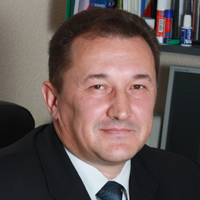Imaging modalities delivery of RNAi therapeutics in cancer therapy and clinical applications
Published on: 4th March, 2021
OCLC Number/Unique Identifier: 9039869756
The RNA interference (RNAi) technique is a new modality for cancer therapy, and several candidates are being tested clinically. Nanotheranostics is a rapidly growing field combining disease diagnosis and therapy, which ultimately may add in the development of ‘personalized medicine’.
Technologies on theranostic nanomedicines has been discussed. We designed and developed bioresponsive and fluorescent hyaluronic acid-iodixanol nanogels (HAI-NGs) for targeted X-ray computed tomography (CT) imaging and chemotherapy of MCF-7 human breast tumors. HAI-NGs were obtained with a small size of ca. 90 nm, bright green fluorescence and high serum stability from hyaluronic acid-cystamine-tetrazole and reductively degradable polyiodixanol-methacrylate via nanoprecipitation and a photo-click crosslinking reaction. This chapter presents an over view of the current status of translating the RNAi cancer therapeutics in the clinic, a brief description of the biological barriers in drug delivery, and the roles of imaging in aspects of administration route, systemic circulation, and cellular barriers for the clinical translation of RNAi cancer therapeutics, and with partial content for discussing the safety concerns. Finally, we focus on imaging-guided delivery of RNAi therapeutics in preclinical development, including the basic principles of different imaging modalities, and their advantages and limitations for biological imaging. With growing number of RNAi therapeutics entering the clinic, various imaging methods will play an important role in facilitating the translation of RNAi cancer therapeutics from bench to bedside.
Sequence-independent single-primer-amplification (SISPA) as a screening technique for detecting unexpected RNA viral adventitious agents in cell cultures
Published on: 12th March, 2021
OCLC Number/Unique Identifier: 8982622827
The sequence-independent, single-primer amplification (SISPA) enables the random amplification of nucleic acids, allowing the detection and genome sequencing of different viral agents. This feature of SISPA method provides evidence for application of it in monitoring the presence of adventitious RNA viruses in cell cultures. We evaluated SISPA method for the detection of a challenge RNA virus representing adventitious agent in cell cultures. Besides, by optimizing the SISPA method in our laboratory, we found false-positive results on negative control lanes in electrophoresis gels. To investigate the sources of contamination, false-positive results of SISPA were cloned into Escherichia coli cells, sequenced, and phylogenetically analyzed. This data revealed that the SISPA method can be used as an adjunct method to confirm the absence of unexpected adventitious RNA viruses in cell cultures. The phylogenetic analysis of SISPA contaminant sequences showed that the false-positive results were caused by nucleic acid amplification of commercial cDNA synthesis kit reagents, probably tracing back to expression plasmids and host ribosomal sequences, used for the production of enzymes. Therefore, laboratories using random amplification methods must be constantly aware of the potentials of such contaminations, yielding false-positive results and background noise in the final NGS reads.
Nano-formulations for Ophthalmic Treatments
Published on: 29th December, 2017
OCLC Number/Unique Identifier: 7325061328
Ocular disorders encompass a multitude of diseases that are unique in their cause, therapy and degree of severity. Due to distinctive morphology of the eye, efficient ocular drug delivery has proven to be a difficult task. Current treatments of ophthalmological diseases include the usage of both intrusive as well as nonintrusive methods such as injections, eye drops, ointments, gels etc. The current state of the art drug delivery methods are associated with low bioavailability and therefore nanotechnology based drug delivery approached are evolving as for improving the therapeutic index of currently used drugs against variety of ocular disorders. This review highlights the recent developments in nano-formulations for ophthalmic treatment and also offers discussions towards the future prospectus of nano-formulations in the mainstream of ophthalmic diseases.
Hydrogel-Based Formulations for Drug Delivery to the Posterior Segment of the Eye
Published on: 12th September, 2023
Hydrogel-based formulations hold significant promise for treating ocular diseases that impact the posterior segment of the eye. These formulations exhibit the ability to surmount ocular barriers and offer sustained drug release, rendering them efficacious drug delivery systems. This article addresses the challenges linked to treating disorders affecting the posterior eye segment and underscores the imperative for less invasive drug delivery methodologies. We further delve into diverse contemporary ocular dosage forms, encompassing gels, nanostructures, and implants, with a specific emphasis on hydrogels. Hydrogels offer several merits, including precise targeting, sustained release, enhanced bioavailability, and non-invasiveness. Moreover, they curtail the risk of adverse effects and foster patient adherence. An enthralling advancement is the amalgamation of hybrid drug delivery systems, integrating nanoparticles, liposomes, dendrimers, and stimuli-activated nano-systems, with hydrogels for posterior eye ailment treatment. These hybrid nano-systems exhibit promise in enhancing drug stability, prolonging drug release, and pinpointing specific tissues within the posterior segment. We also provide an overview of ongoing clinical trials and approved hydrogel-based drug delivery systems, like Retisert and Ozurdex. These systems have demonstrated efficacy in managing chronic non-infectious uveitis, Age-related Macular Degeneration (AMD), and diabetic macular edema. Nevertheless, challenges persist, including optimizing bioavailability, maintaining drug stability, and implementing personalized treatment approaches. The incessant evolution of gel-based drug delivery systems stands to substantially enhance patients’ quality of life and establish new benchmarks in treating posterior eye diseases. The future of ophthalmology brims with excitement, as gel-based drug delivery systems hold the potential to revolutionize ocular therapies, providing effective remedies for an array of vision-related afflictions.
Evaluation of In vitro and Ex vivo Models for Studying the Effectiveness of Vaginal Drug Systems in Controlling Microbe Infections: A Systematic Review
Published on: 28th November, 2023
The survey gives an in-depth examination of medicate assimilation challenges within the genital range and the improvement of vaginal medicate conveyance gadgets to overcome these challenges. It investigates the components involved in medicate discharge within the genital locale and examines commonly utilized vaginal sedate conveyance frameworks such as nanoparticles and hydrogels. The survey centers on the applications of these conveyance frameworks in controlling bacterial vaginal diseases. The plan issues related to vaginal sedate conveyance gadgets are moreover examined, highlighting the significance of considering variables such as mucoadhesion and bodily fluid porousness. The survey portrays different in vitro and ex vivo models utilized for assessing these frameworks, counting organoids and new human cervical bodily fluid. The choice of show depends on the particular objectives and characteristics of the definition. The audit emphasizes the noteworthiness of utilizing these models to pick up important bits of knowledge and make precise forecasts with respect to the execution of medicate conveyance frameworks in vivo. Moreover, grandstands progressed models utilized for other mucosal locales as a potential motivation for future models of the female regenerative framework. Generally, the audit highlights the significance of understanding organic instruments and planning compelling vaginal drug conveyance frameworks to progress sedate conveyance within the genital region. It emphasizes the require for suitable models to evaluate and anticipate the execution of these conveyance frameworks.
GELS as Pharmaceutical Form in Hospital Galenic Practice: Chemico-physical and Pharmaceutical Aspects
Published on: 10th February, 2025
This work aims to describe the chemical-physical properties of various GELS used as galenic forms in hospital pharmacy practice. After an overview of the excipients and method used three preparations are reported. LAT GEL is used as an anesthetic in an emergency (pediatry ) in treating little Traumatic lacerations of the skin and scalp, calcium gel is used as an antidote for fluoride acid burns, and Lidocaine viscose 2% oral gel is used in some pathological conditions like severe esophagitis in onco - hematological patients after radiotherapy or chemotherapy. The galenic role in the situation of some drug shortages was also analyzed.




